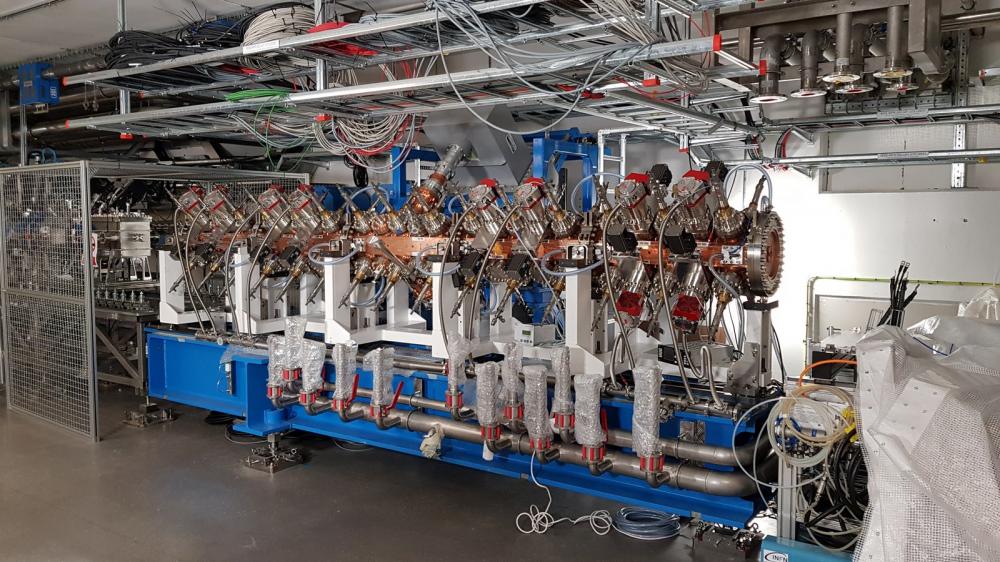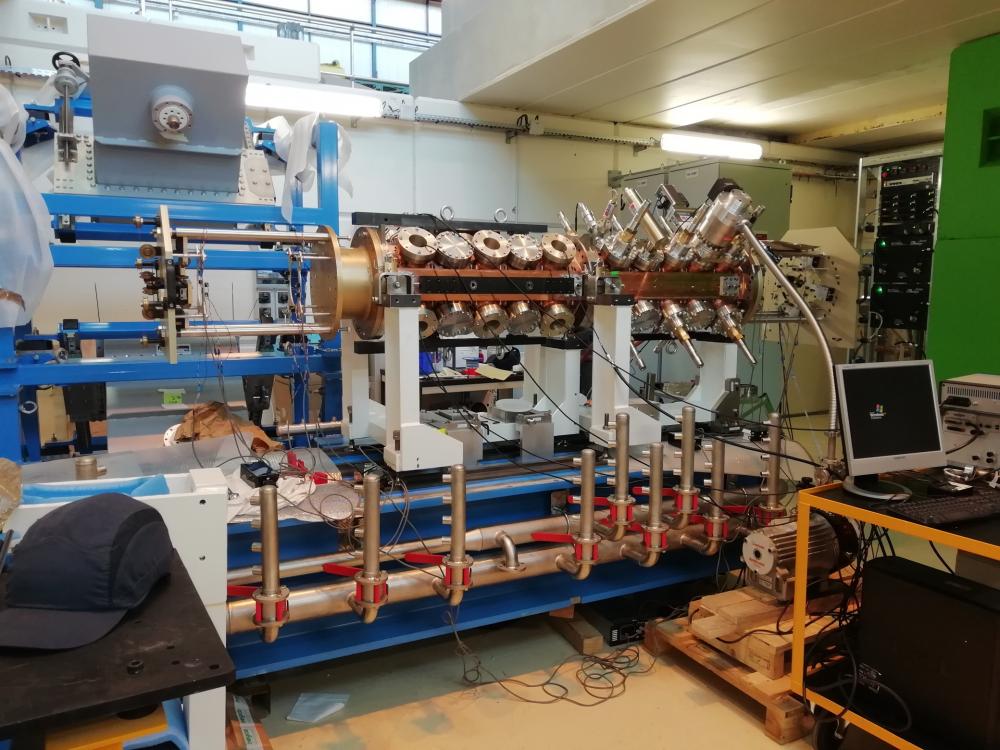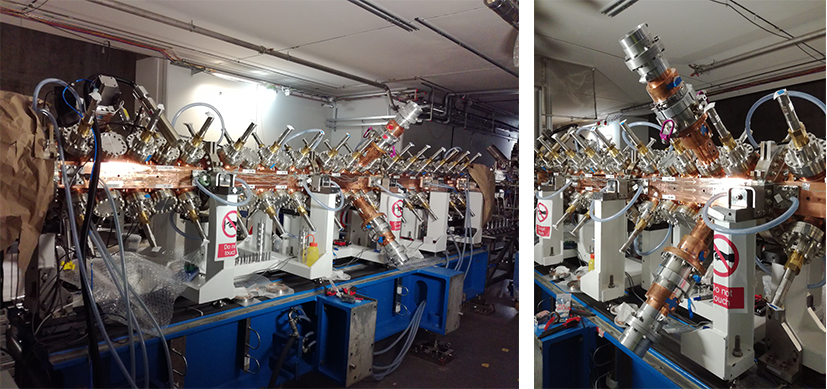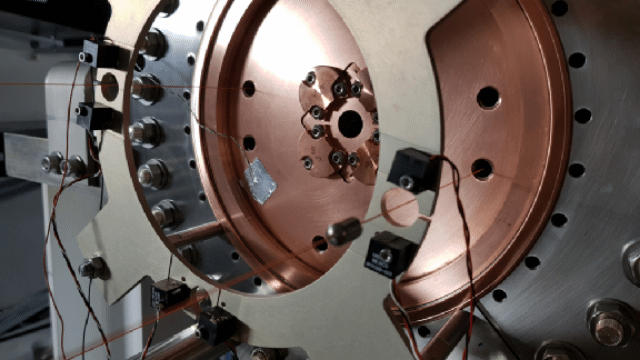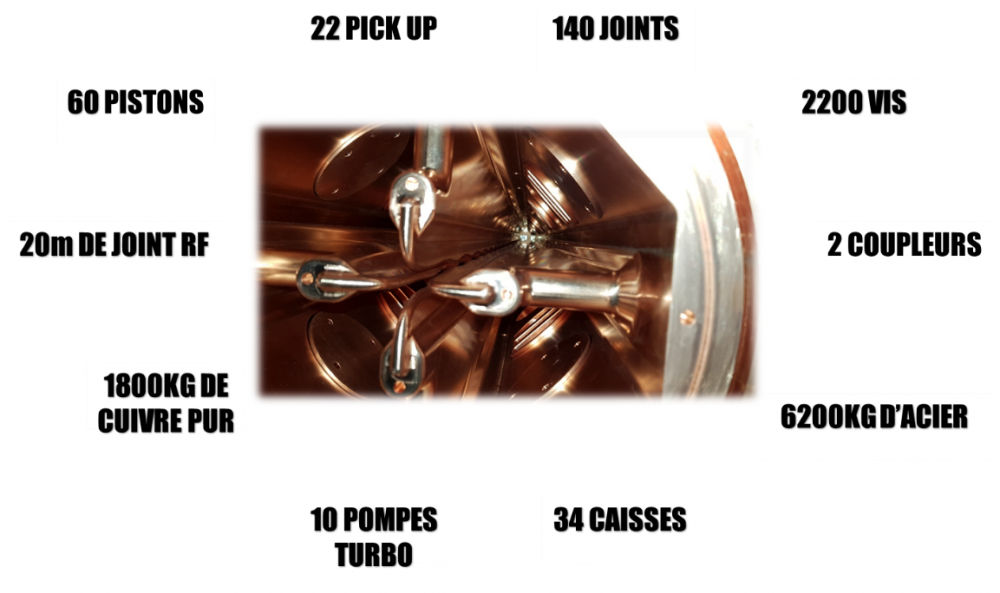On December 4, 2019, mechanical reception of the RFQ provided by Irfu took place in the tunnel of the European Spallation Source (ESS) project in Lund, Sweden. Following the delivery of the RFQ on August 27, 2019, the installation immediately followed with the Irfu team present and guaranteeing its success over the following months.
The RFQ is a key part of the "hot" part of the ESS linear accelerator: it is the first accelerator cavity. It focuses, samples and accelerates the proton beam produced by the ion source. In other words, it transforms the continuous proton beam into a pulsed beam, which is transmitted to the next section of the accelerator and ensures the quality of the beam for the entire accelerator.
Upon delivery, i.e. from 27 August 2019, an Irfu team, with the support of the ESS installation team, began the assembly and installation of the 4.6-metre-long RFQ according to a well-defined and already experienced schedule and procedure.
Indeed, during the fabrication of the RFQ sections, the Irfu team "trained" to assemble the RFQ within the Synergium at the CEA in Saclay. This simulation made it possible to define the best installation procedure and to develop the necessary tools in order to limit the time spent by the Irfu teams in Sweden. The notion of simulation is important because despite the presence of adapted tools (mechanical bridge), the team trained with the available space and tools in the tunnel of the ESS project in order to validate the procedures and assembly times.
This blank assembly in France included the installation of the support beam, the section holding frames, the connection of the first two sections, the assembly of the tuners on section 1 and the insertion of a power coupler model (RF power input). The assembly of the two sections also made it possible to perform an RF (Radio Frequency) measurement in order to validate the theoretical model and the manufacturing quality.
This blank assembly in France included the installation of the support beam, the section holding frames, the connection of the first two sections, the assembly of the tuners on section 1 and the insertion of a power coupler model (RF power input). The assembly of the two sections also made it possible to perform an RF (Radio Frequency) measurement in order to validate the theoretical model and the manufacturing quality.
With the team thus well prepared, in just three days (August 30, 2019), the support beam was installed and sections 1 and 2 were fitted with tuning tuners and tested for leaks.
The following sections then followed one another without any trouble:
• September 6, 2019: 3 sections installed
• September 20, 2019: 5 sections installed
Following this first successful purely mechanical assembly campaign, a second campaign for the assembly of RF equipment took place in October 2019. Thus, in ten days, from October 8 to 18, the RFQ was equipped with all its Tuners (RF tuning) and power couplers (RF power inputs).
As the RFQ is a radio frequency accelerator cavity, it can only be validated by RF measurements to quantify its characteristics and verify that they correspond to the theoretical design. It is thus on November 8, 2019, barely 3 months after delivery, that the RF measurements, known as Bead-pull measurements, made it possible to validate the RFQ cavity and demonstrate that its RF tuning thanks to the tuners is optimal. The RF measurement method used is the electromagnetic disturbance method: electric and magnetic field measurement in response to the disturbance brought by a geometric element (ball moving along the RFQ). The 60 tuners evenly distributed along the length of the RFQ can sink more or less into the cavity. Compared to the initial depression of an adjustable tuner, called tangent (or "flush") to the cavity wall, the 60mm stroke is distributed according to a 25mm depression or a 35mm retraction. On average, each tuner has been depressed by about 5mm, the last iterations being done by displacements of a few hundredths. Low use of the tuners adjustment range means that the assembly of the single sections and then the 5 sections together is very correct.
An RFQ cavity is qualified by different quality factors (Q, S and T). These factors can be measured and compared to the theoretical values in order to validate the RFQ cavity.
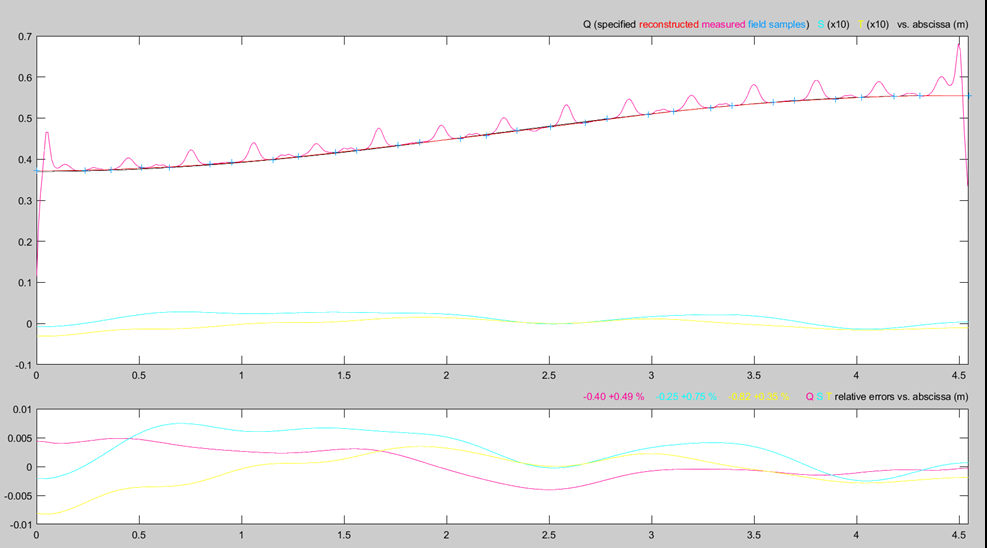
Top: summary of the qualifying RF measurements along the RFQ (4.50m) with the theoretical Q (black curve), the reconstructed value after processing of the bead-pull RF measurements (red curve), the value measured during the RF measurements (pink curve) and the position of the measuring antennas at the tuning tuners (blue markers); bottom: estimated relative errors on the measurements of the quality factors (< + or - 1%)
The last assembly operation was the installation of the entire RFQ pumping system by the ESS team, which was validated by a global leak test carried out by the ESS teams, in the presence of the Irfu team.
The reception of this mechanical phase was therefore carried out on December 4, 2019 with a final RF characterization of the cavity as well as a final leakage test that guarantees its accelerating quality and vacuum tightness and therefore its functionality for the ESS project. This RF adjustment of the RFQ was of course performed at low power. The final acceptance of the hot part of the accelerator of the ESS project and thus of the RFQ supplied by the Irfu, at nominal power, will be carried out in spring 2020.
To summarize, the assembly of the RFQ ESS is:
- 28 days of assembly in 6 campaigns
- 11 Irfu participants in assembly and testing (RF, vacuum, mechanical)
- 128 working days in total.
But also:
Contact: B. POTTIN et l’équipe Irfu - RFQ ESS
• Accelerator physics and technology › Electron-positron linear accelerators
• Accelerators, Cryogenics and Magnetism Division (DACM) • The Systems Engineering Division



